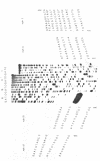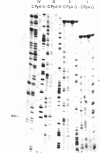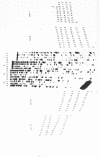Abstract
A rapid enzymatic approach is described for the sequence analysis of a 5' terminally labelled restriction fragment. It involves limited nicking of the strands of the molecule throughout the sequence by pancreatic DNAase I. The 3' hydroxyl groups exposed by each nick are then used to prime chain extension by DNA polymerase I in four separate reactions. Each reaction uses one of the four chain terminating dideoxynucleoside triphosphates (ddNT-PSs), together with the four deoxynucleoside triphosphates (dNTPs). In a single reaction all the 3' ends are terminated in positions of the same base, which is different for each of the four reactions. When the products of these reactions are resolved by gel electrophoresis according to size, a sequence can be deduced from the pattern of radioactive bands. Sequences can be determined onwards from 10-20 residues from the 5' labelled end. The length of sequence which can be determined is only limited by the resolution of the gel.
Full text
PDF
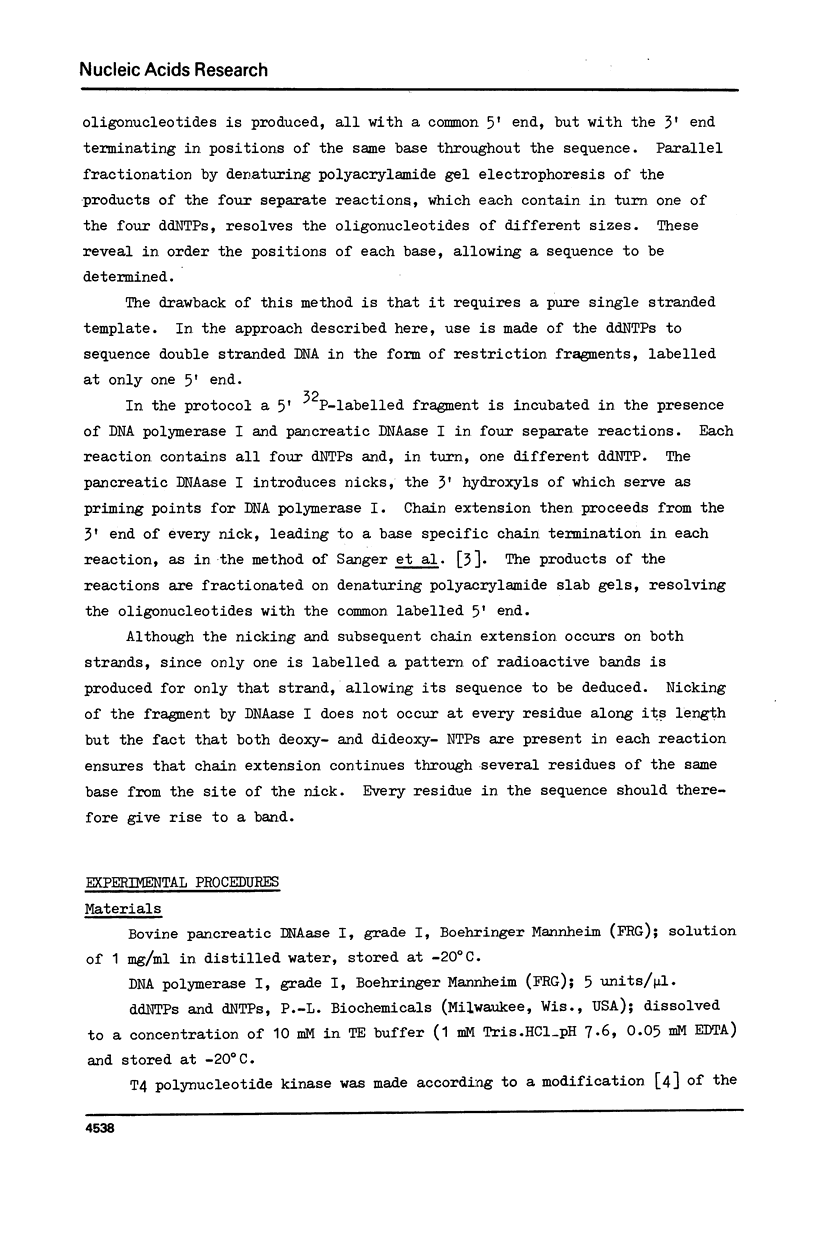
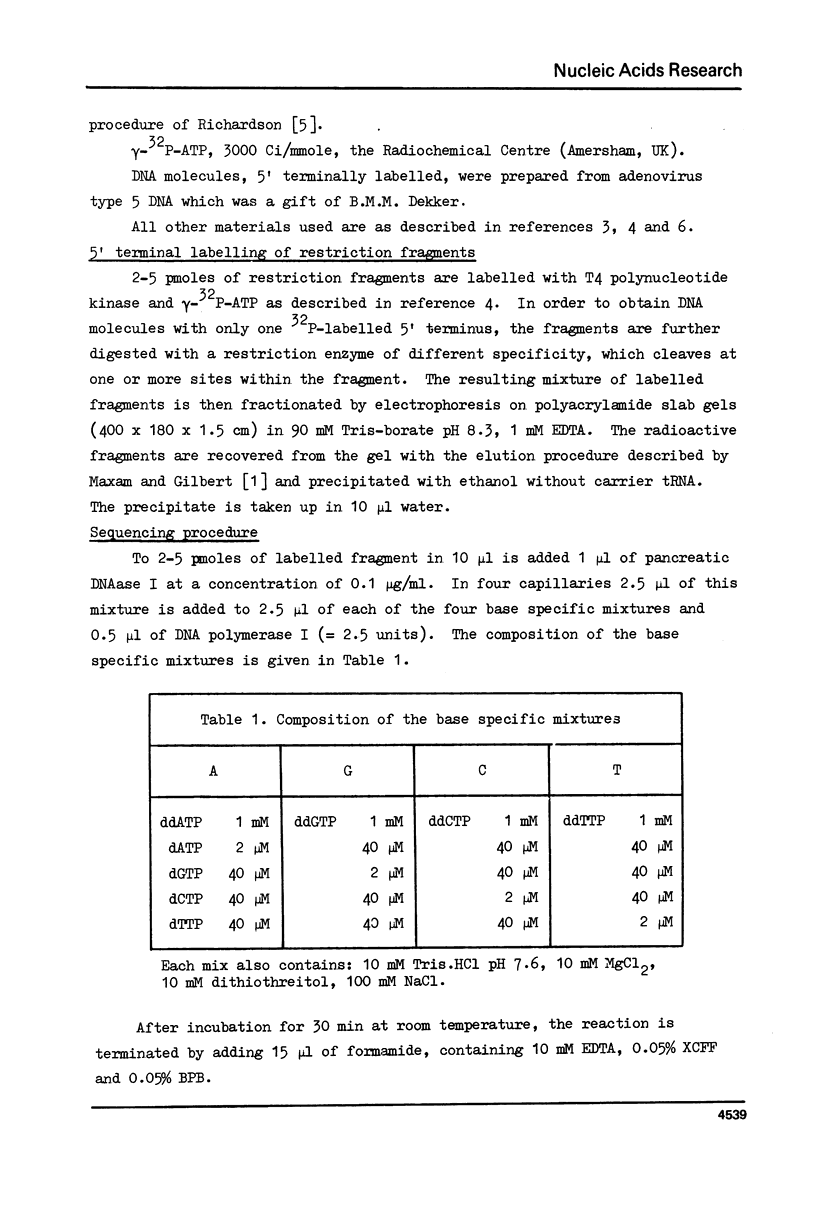
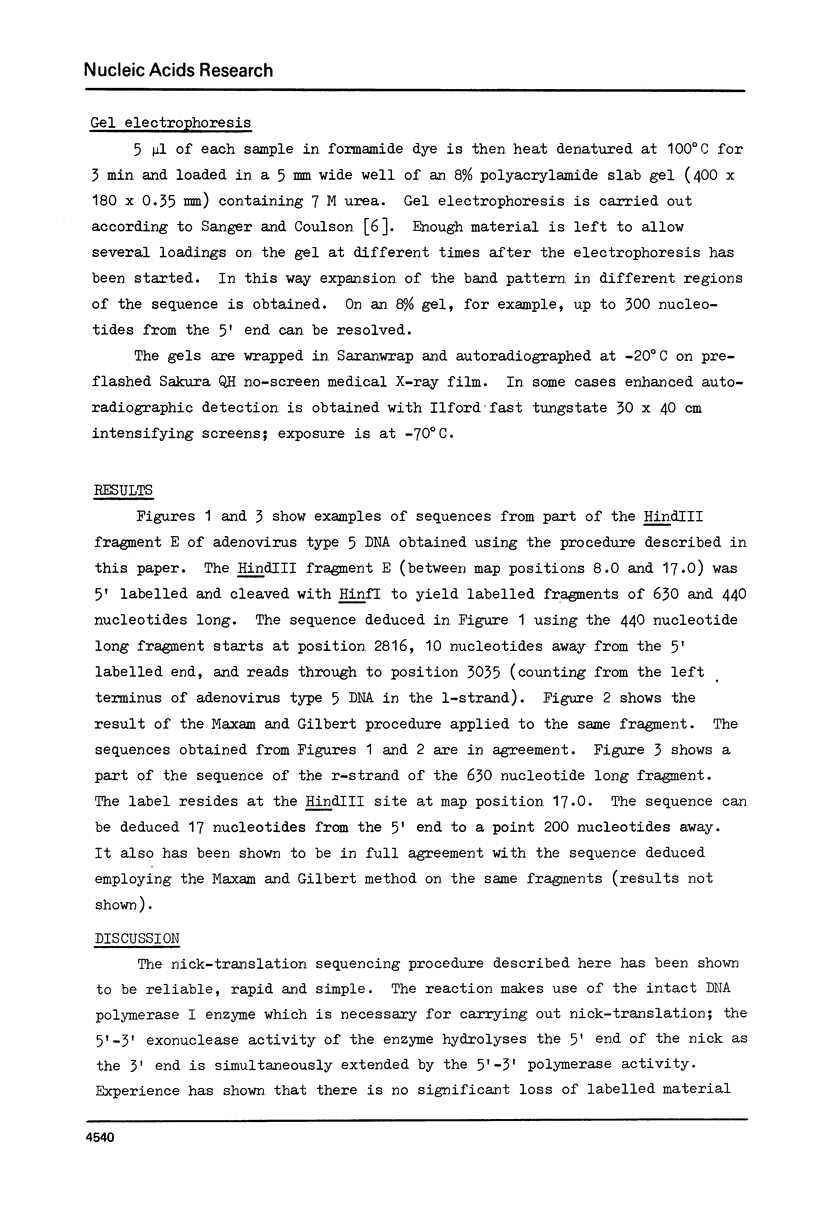
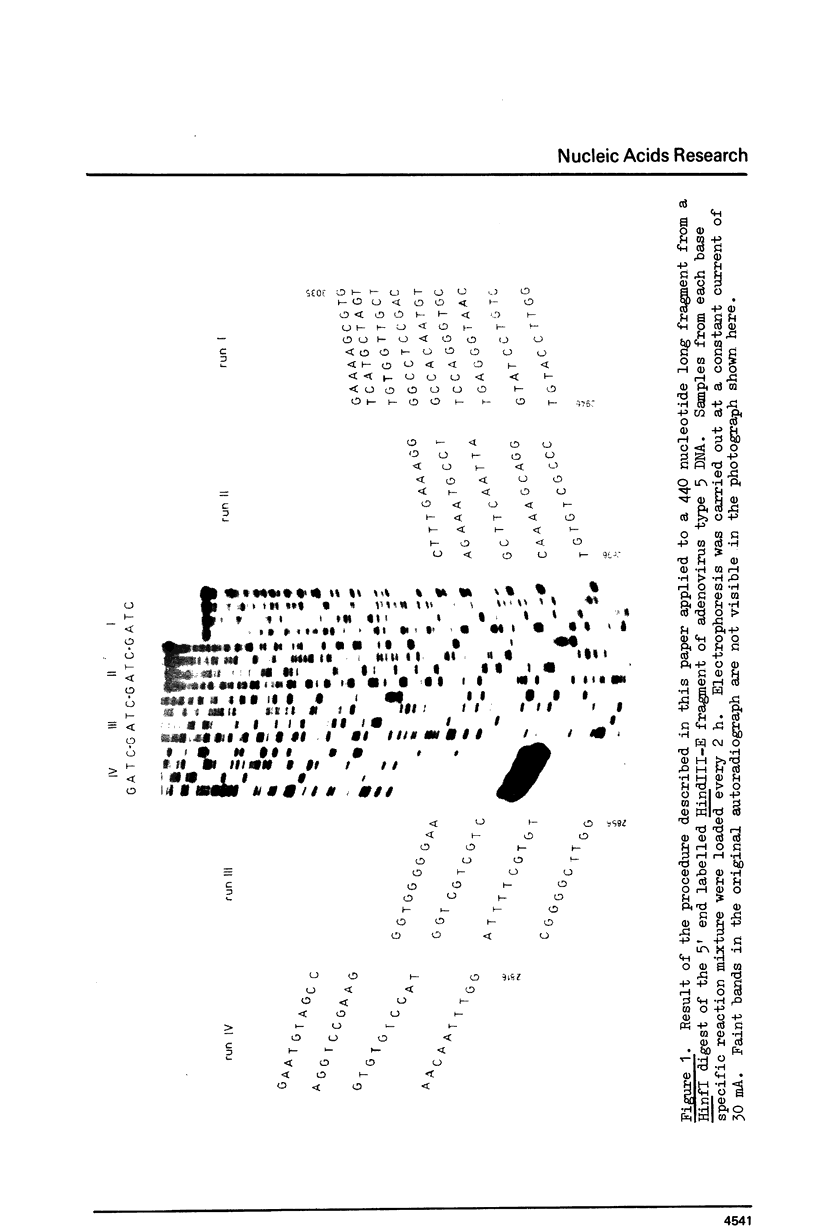
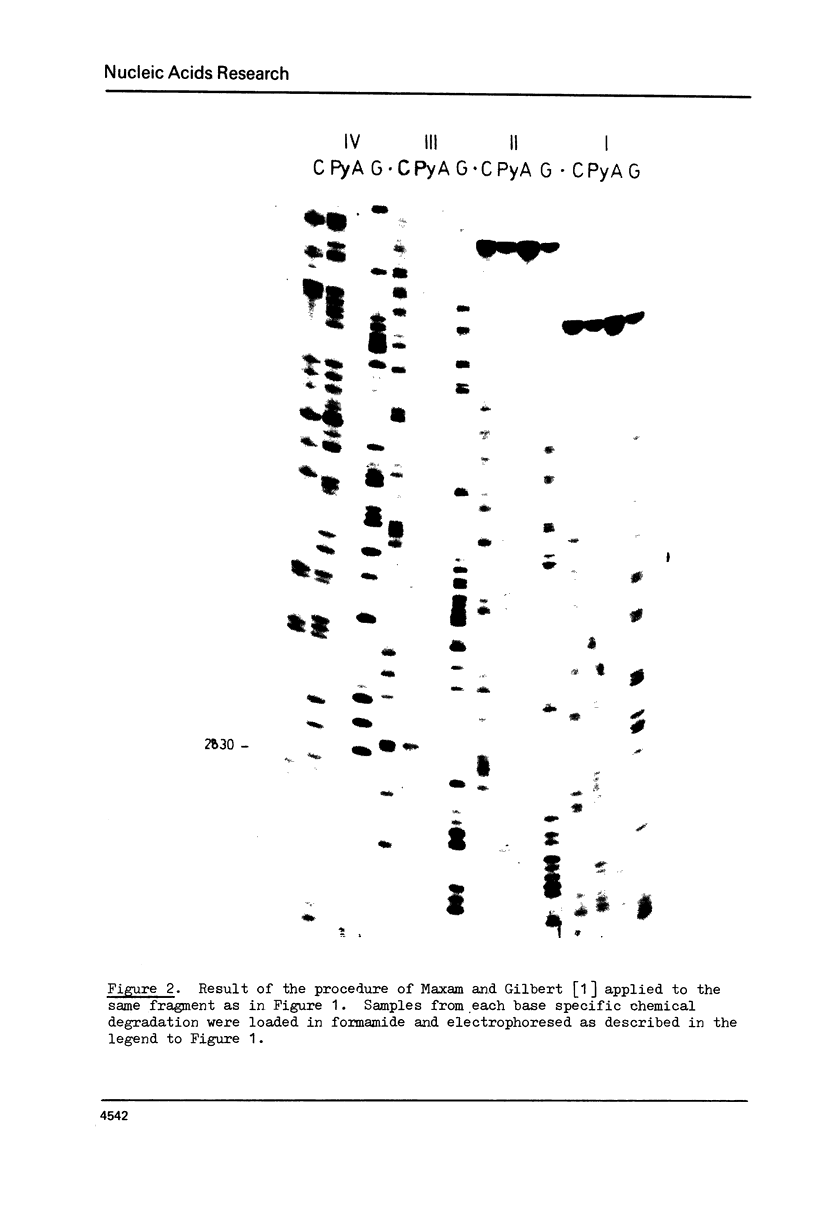
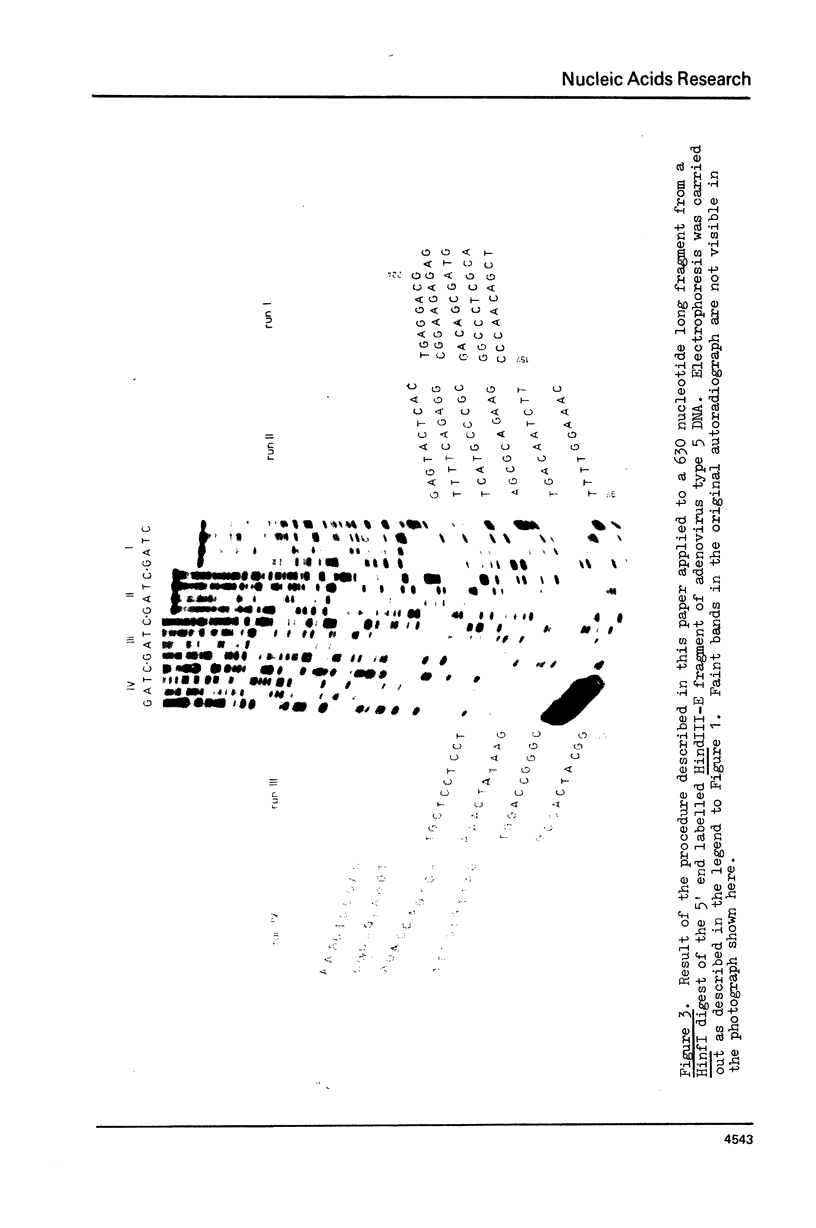
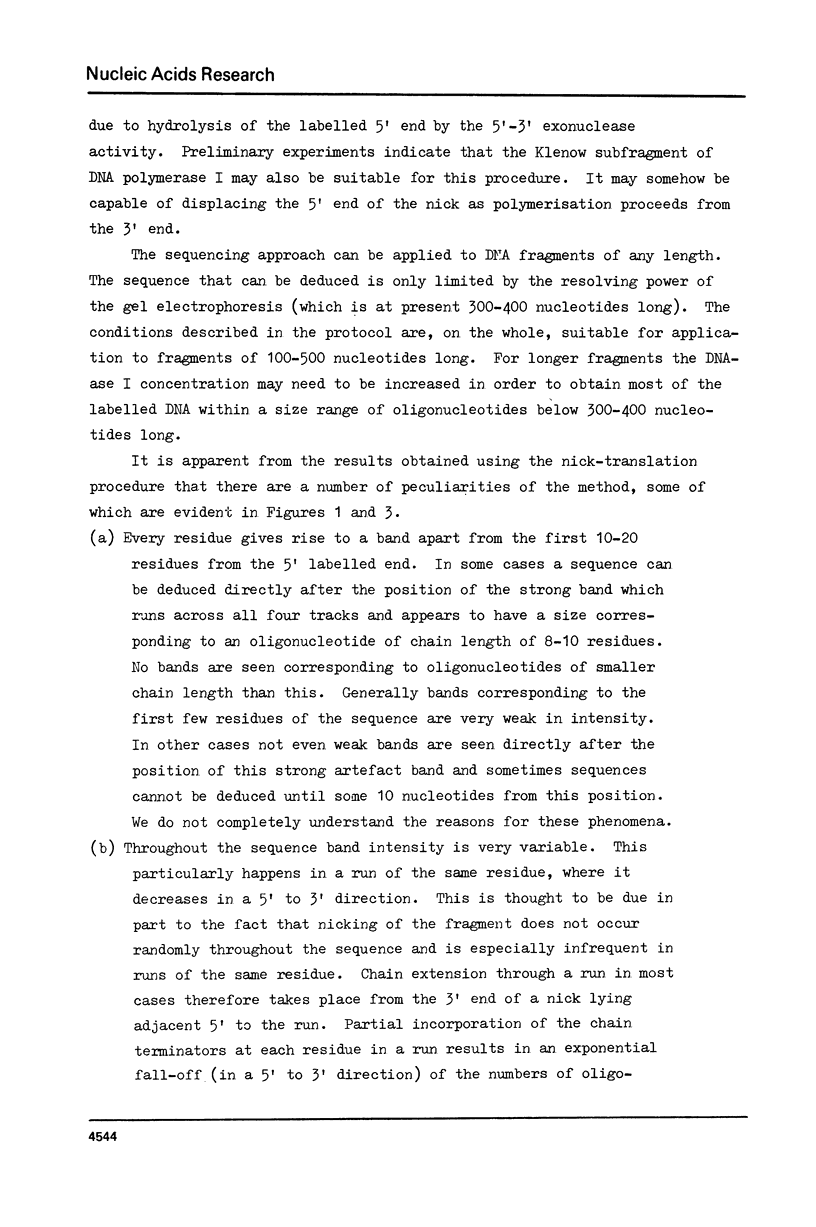
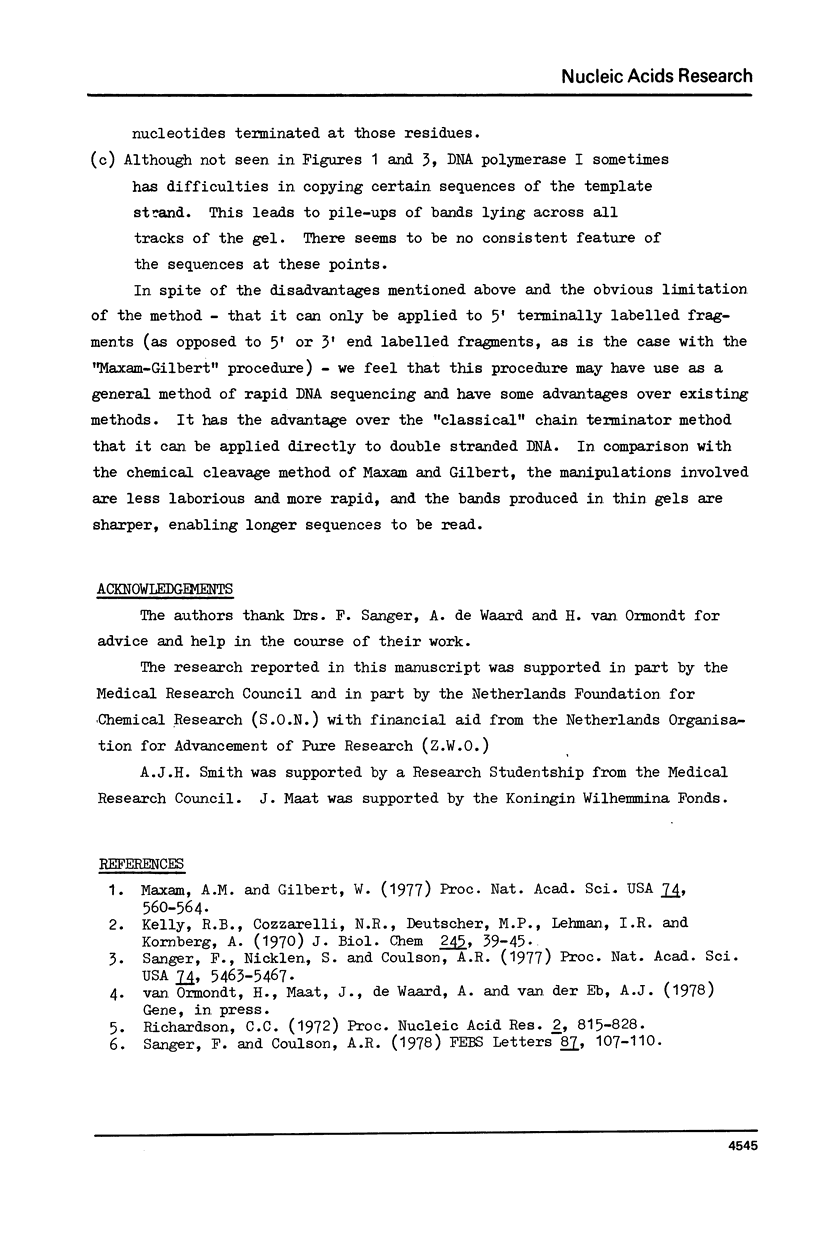
Images in this article
Selected References
These references are in PubMed. This may not be the complete list of references from this article.
- Kelly R. B., Cozzarelli N. R., Deutscher M. P., Lehman I. R., Kornberg A. Enzymatic synthesis of deoxyribonucleic acid. XXXII. Replication of duplex deoxyribonucleic acid by polymerase at a single strand break. J Biol Chem. 1970 Jan 10;245(1):39–45. [PubMed] [Google Scholar]
- Maxam A. M., Gilbert W. A new method for sequencing DNA. Proc Natl Acad Sci U S A. 1977 Feb;74(2):560–564. doi: 10.1073/pnas.74.2.560. [DOI] [PMC free article] [PubMed] [Google Scholar]
- Sanger F., Coulson A. R. The use of thin acrylamide gels for DNA sequencing. FEBS Lett. 1978 Mar 1;87(1):107–110. doi: 10.1016/0014-5793(78)80145-8. [DOI] [PubMed] [Google Scholar]
- Sanger F., Nicklen S., Coulson A. R. DNA sequencing with chain-terminating inhibitors. Proc Natl Acad Sci U S A. 1977 Dec;74(12):5463–5467. doi: 10.1073/pnas.74.12.5463. [DOI] [PMC free article] [PubMed] [Google Scholar]



